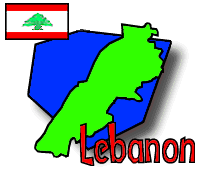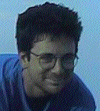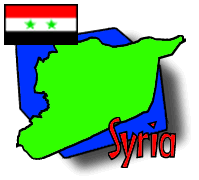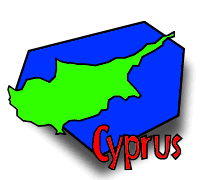
| Webmaster's Note: Because the BikeAbout team is traveling in smaller groups for a little while, we have changed the format of the journal slightly. The rider notes for the lead group (today it's the guys who are in Beirut) are followed by notes for the other group(s). When the group rejoins in late February or early March, we will return to the original format for these pages. |
While, Corinne and andrEa have remained on Cyprus, and Anthony is biking in Syria, Ethan and Padraic are in Beirut:
topics: Leila Mouammar (Person of the Day), Beirut (reconstruction, Hamra), Civil War, war, HISTORY, Aid el-Fitr party; jump to dispatch

Food of the Day: Cracked-wheat and tomato stew
Word of the Day: Haram
Tech Fact of the Day: Lebanon's multi-religious population
Person of the Day: Leila Mouammar ![]()
Place of the Day: American University of Beirut
Group Dispatch (Lebanon), January 29–30

Questions? Ask Ethan ![]() !
!
 |
 |
 |
 |
 |
|
Itinerary/ Journal |
Discussions |
About Lebanon |
eDscape Projects |
Scrapbook |
|
|
|
|
|
|
|
While, Corinne and andrEa have remained on Cyprus, and Ethan and Padraic are in Beirut, Anthony is biking in Syria:
topics: Ramadan, Omayyids, Islam, souqs, daily life, alphabets, Turkish bath; jump to dispatch
Food of the Day: Ramadan dinner
Word of the Day: Ba-red — "cool"
Tech Fact of the Day: Ramadan
Place of the Day: Omayyid Mosque
Group Dispatch (Syria), January 29–31

Questions? Ask Anthony ![]() !
!
 |
 |
 |
 |
 |
|
Itinerary/ Journal |
Discussions |
About Syria |
eDscape Projects |
Scrapbook |
|
|
|
|
|
While Ethan and Padraic are in Beirut, and Anthony is in Syria, Corinne and andrEa have remained on Cyprus:
topics: wildlife, bike safety, diving; jump to dispatch

Word of the Day: Endexi — "OK"
Person of the Day: Captain Paris Elefnoui
Group Dispatch (Cyprus), January 29–February 1

Questions? Ask Corinne ![]() !
!
 |
 |
 |
 |
 |
|
Itinerary/ Journal |
Discussions |
About Cyprus |
eDscape Projects |
Scrapbook |
|
|
|
|
|
Copyright 1997-2004 BikeAbout. All rights reserved.